
Title : Integrative Medicine for Modern Health: Bridging Eastern Wisdom and Western Science for Longevity and Preventive Well-Being
Name : Dr. Cesar Daoud
University : Founder of Bioenergy
Country : Cyprus
Download AbstractAbstract
As chronic diseases and stress-related conditions rise globally, the need for a preventive, patient-centred approach to health has never been more urgent. Integrative Medicine offers an effective model—uniting the precision of Western science with the depth and balance of Eastern healing traditions. In this session, Dr Cesar Daoud explores how these complementary systems can work together to restore harmony, strengthen resilience, and support longevity. Drawing on more than two decades of clinical experience, he demonstrates how ancient diagnostic principles and modern evidence-based practices can merge to address the physical, emotional, and energetic dimensions of well-being. Participants will gain practical insights into how Integrative Medicine can be applied in daily life to reduce inflammation, balance hormones, and optimise vitality—helping individuals not only treat illness but prevent it. This talk invites a redefinition of modern health—one that empowers individuals to take charge of their wellness journey through awareness, balance, and sustainable vitality.
Biography
Dr. Cesar Daoud, Doctor of Acupuncture & Traditional Chinese Medicine, Integrative Medicine, and Health & Longevity Expert, is the founder of Bioenergy, established in 2008. With over 21 years of international experience, he has helped thousands—from children to heads of state—restore balance, manage chronic conditions, and cultivate vitality through a unique blend of Eastern and Western medicine. Dr. Daoud received his academic and clinical training in Lebanon, France, and China, and pursued advanced studies in the Netherlands and the UK. His multidisciplinary background includes Acupuncture, Traditional Chinese Medicine, Physical Therapy, Posturology, Osteopathy, Qigong, Biopuncture, and Vitamin Therapy. Now based in Cyprus, Dr. Daoud integrates ancient healing wisdom with modern science to promote energy, longevity, and a pain-free life. Dr. Daoud is renowned for his expertise in chronic pain, women’s health, emotional balance, and hormonal and nervous system optimization, as well as for his guidance in stress management and resilience. A passionate Health & Longevity Lecturer, he inspires audiences to embrace an integrative, preventive approach—bridging tradition and innovation for lasting well-being.

Title : Representations of Official and Alternative Healing Practices in Relation to the Morbidities of the Tenetehara Tembé
Name : José Augusto Carvalho de Araújo
University : State University of Pará, Belém
Country : Brazil
Download AbstractAbstract
Background: Indigenous health has long been marginalised within biomedical systems, despite the persistence of traditional practices that address both physical and spiritual well-being. Among the Tenetehara-Tembé people of the Alto Rio Guamá Indigenous Land (TIARG), located in northeastern Pará (Eastern Amazonia), traditional healing practices continue to play a central role in community resilience, particularly during times of crisis such as the COVID-19 pandemic.
Objectives: This lecture seeks to analyse how the Tenetehara-Tembé conceptualise and practice healing in relation to morbidity, with a particular focus on the interplay between official medical systems and alternative Indigenous practices. A decolonial perspective is adopted to highlight Indigenous epistemologies of prevention and care.
Methods: Ethnographic engagement was carried out in the Zawara Uhu village, with attention to the roles of community leaders, midwives, and shamans in health-related practices. The study draws on lived experiences and narratives shared by the Tembé during and beyond the COVID-19 pandemic, situating these within broader discussions on Indigenous health and environmental transformations.
Results: Findings underscore that pandemics, such as COVID-19, reflect the consequences of negligent modernity and its impacts on ecosystems. The Tembé’s practices illustrate a holistic understanding of health—encompassing body and soul—and reveal alternative frameworks for disease prevention and healing. These practices are not merely cultural survivals but constitute adaptive strategies of resilience and citizenship in the face of ongoing social and environmental challenges.
Conclusion: The Tembé’s healing practices highlight the critical importance of Indigenous knowledge in confronting morbidities that arise both from modern illnesses and from the ecological crises of the civilizing process. By integrating traditional and alternative approaches to care, the Tembé demonstrate pathways toward more inclusive and sustainable health systems.
Keywords: Disease; Tembé; Morbidity; Healing Practices
Biography
José Augusto Carvalho de Araújo holds a PhD in Sociology from the Federal University of São Carlos (UFSCar-SP), where he also completed his postdoctoral studies. He earned a Master’s degree in Sociology from the Federal University of Paraíba (UFPB), a specialization in Political Science from the Federal University of Pará (UFPA/IUPERJ), and a Bachelor’s degree in Social Sciences from the University of the Amazon. Since 1993, he has served as a professor at the State University of Pará (UEPa), where he is currently Adjunct Professor with Full-Time and Exclusive Dedication (TIDE) and a permanent faculty member of the Graduate Program (stricto sensu) in Environmental Sciences. With 32 years of experience in higher education, his research and teaching focus on Sociology and Anthropology, with an emphasis on health and the environment.
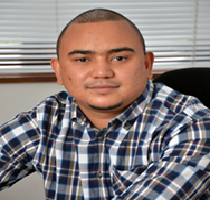
Title : Blood, Rituals and Power: Exploring the Beliefs and Use of Traditional African Medicine Within Gang Culture in the Free State Province, South Africa
Name : Ashwill Ramon Phillips
University : University of the Free State
Country : South Africa
Download AbstractAbstract
The Free State province in South Africa has become an epicenter for a novel form of violence wherein criminal youth gangs incorporate elements of African witchcraft and esoteric belief ideology into their gang practices. A vital component of these practices is the use of traditional African medicine or ‘muti’ which is comprised of plants, herbs and in extreme cases, human organs and blood, and is utilized to further coercive, ritualistic and violent purposes within gangs. Despite growing reports of muti-related rituals including organ harvesting, the consumption of human blood, and the use of paraphernalia believed to enhance invincibility, official crime statistics and empirical literature remain limited. Moreover, no studies in the region have been conducted directly exploring gang members’ perspectives and lived realities regarding how muti is conceptualized and used within the context of the gang. Grounded in subcultural and cultural transmission theory, this study draws on qualitative data to examine the symbolic, functional and ideological roles of muti in youth gangs in the Free State. Data were collected through semi-structured interviews with 23 active gang members, 16 non-gang-affiliated offenders and 18 criminal justice professionals, and analysed using reflexive thematic analysis. The findings revealed that muti is not merely a symbolic tool but is embedded in gang initiation rites, hierarchy, identity, ideology and violence. Gang members believed muti to be a means of acquiring supernatural protection and enhance spiritual power, instilling fear, and affirming loyalty to the gang. The manipulation of muti for criminal gain represents a distinct departure from conventional gang norms and signals a broader spiritualisation of gang identity in the province, while simultaneously perpetuating illegal organ harvesting and trade within the region. This study offers a unique contribution to gang scholarship by documenting how indigenous belief systems are appropriated and weaponised in youth criminal subcultures. Moreover, the study provides critical insights for the development of culturally informed intervention strategies, particularly in contexts where traditional spirituality intersects with organised violence.
Keywords: occult-gang, youth gang, typology, witchcraft, devil worship, ritual, muti , demon.
Biography
Dr Ashwill Ramon Phillips is a Lecturer in the Department of Criminology at the University of the Free State, South Africa. He holds a PhD in Criminology and specializes in youth deviance, gang subcultures, and criminogenic risk trajectories. His research focuses on the socio-cultural dynamics of youth gangs, including the intersection of gang identity with occult practices and symbolic violence. Dr Phillips has published and presented extensively on pathways to youth misconduct, resilience, and the formation of deviant identities. His work is rooted in qualitative and reflexive methodologies, and he is committed to advancing criminological knowledge that informs both theory and practice. Dr Phillips is also actively involved in curriculum development, postgraduate supervision, and community engagement initiatives with the Department of Correctional Services.
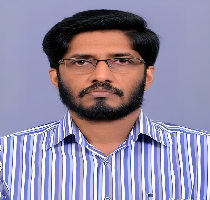
Title : Nutraceuticals that Influence Oxidative Stress, Inflammation and Gene Regulation
Name : Krishnakumar. K
University : Maharaja’s College
Country : India
Download AbstractAbstract
Nutraceuticals are the substances that derived from food sources with additional health benefits in addition to the basic nutritional value. It is well known that many compounds of plant origin can ameliorate various patho-physiological conditions. Reactive Oxygen Species and free radicals are the key factors associated with oxidative stress that induce cell damage by interfering the biomolecules including DNA. Any molecule/s that can scavenge the free radicals have a potential to use as a nutraceutical.
While screening the nutraceutical potential of algae we could isolate two algae Asterarcys quadricellulare and Scenedesmus vacuolatus and found that it produced a variety of pigments. It was identified that A. quadricellulare produced b-carotene, astexanthin, lutein and canthaxanthin under nutrient limited cultural conditions. These pigments were subjected for bioassay and noticed that it possessed in vitro free radical scavenging property, cytotoxicity on HeLa and Ht29 cell lines as well as anti-inflammatory property on RAW 264.7 macrophage cell lines by inhibiting the action of inflammatory mediators like COX, LOX, MPO and iNOS and reducing cellular nitrite level. The aplanospores of S. vacuolatus accumulated canthaxanthin, b-carotene, astaxanthin and lutein under Nitrogen-limited conditions in a two-stage cultivation system. These pigments were subjected for bioassay and found that they possessed cytotoxic property on HeLa and HT-29 cell lines. These results indicated the nutraceutical potential of A. quadricellulare and S. vacuolatus.
Our laboratory also conducted diverse study on phytochemicals of plant origin. The plant one which we focused was C. papaya. A preliminary study of the flavonoids of this plant showed that it possessed a variety of nutraceutical potential. Hence, we standardized the methodology for isolating its flavonoid fractions from the leaf further fractionating with HPTLC, identifying flavonoids through UPLC-Q-ToF-MS/MS analysis, quantification by HPLC and evaluating free radical scavenging potential using DPPH and FRAP assays.
The Flavonoid rich fraction and HPTLC separated fractions were characterized via UPLC-Q-ToF-MS/MS analysis and identified 11 flavonoids with 4 new ones. HPLC quantification revealed that mauritianin is one of the major flavonoids in FFCP, with its yield being twofold higher compared to previous reports. Flavonoid rich fraction exhibited significant free radical scavenging and metal-reducing property. The antioxidant activity of the HPTLC fractions of FFCP showed that the quercetin and its derivative-containing fraction (B3) exhibited superior antioxidant activity compared to the fraction containing kaempferol and its derivatives.
The in-vitro investigation demonstrated that the flavonoid fraction of exerts cytoprotective effects on human erythrocytes and peripheral blood mononuclear cells (PBMCs). It was ascertained by SEM, H2O2 induced oxidative damages such as lipid peroxidation, LDH leakage, DNA damages, effectively reduced intracellular ROS production and calcium mobilization. The efficacy was ascertained by increased the activity of antioxidant enzymes, upregulated Nrf2 gene expression and its nuclear translocation. ADMET and drug likeness prediction showed that all flavonoids have good ADME and drug likeness score to develop as a potential drug against oxidative stress associated diseases. Flavonoid rich fraction inhibited the activity of key inflammatory enzymes namely COX, LOX, and iNOS responsible for the production of proinflammatory markers such as prostaglandins, leukotrienes, and nitric oxide. Additionally, the fraction downregulated the expression of the NF-κB transcription factor and the subsequent production of pro-inflammatory markers such as TNF-α, IL-6, and IL-1β in LPS induced cells.
These studies revealing the potential of algal pigments obtained from two algae and flavonoids of plant origin have nutraceutical value to ameliorate the consequences of free radical medicated damages.
Biography
Prof. Krishnakumar. K, PhD in Biochemistry, currently working as a Professor in Department of Botany, Maharaja’s College, supervising research students in the field of nutraceuticals, published more than 25 research articles in the field of nutraceuticals, presented papers in national and international seminars, 25 years of teaching Botany.

Title : Exploring Siddha Perspectives in Autoimmune Disorders: Evidence from Crohn’s Clinical Case Studies
Name : Dr. Bhuvanagiri Sathya Sindhuja
University : Chakrasiddh Holistic Healing Centre
Country : India
Download AbstractAbstract
Autoimmune diseases, characterized by the immune system’s erroneous attack on the body’s own cells, present a complex pathophysiological challenge, often necessitating a comprehensive and integrative treatment strategy. The current emerging complementary therapies, such as Siddha and energy healing, offer a holistic approach to restoring immune balance by addressing both the underlying causes and symptomatic manifestations of autoimmune disorders. Crohn’s disease (CD), a chronic autoimmune disorder affecting the gastrointestinal tract, is characterized by inflammation, abdominal pain, diarrhea, weight loss, and malabsorption. Conventional treatments involve immunosuppressants, biologics, and surgery, but chances for relapse of the system are always present. Many patients seek complementary therapies to manage symptoms and improve quality of life in such conditions.
According to Siddha principles, Crohn’s is caused by an imbalance in the three humors (Vatham, Pitham, and Kapham), primarily Pitha aggravation, leading to chronic intestinal inflammation. Traditional Siddha medicine offers a holistic and integrative approach in managing Crohn’s disease, focusing on restoring immune balance, reducing inflammation, and healing the gut. This study presents two cases of Crohn’s disease successfully managed at Chakrasiddh, demonstrating significant clinical improvement through Siddha-based therapy, energy healing, and dietary modifications. Both cases exhibited marked improvements in laboratory biomarkers, symptomatic relief, and colonoscopic findings following treatment. Pre and post-therapy assessments, including biochemical parameters, inflammatory markers, and endoscopic evaluations, provide objective evidence of the therapeutic efficacy of this integrative approach. These findings highlight the potential role of Siddha therapies in complementing conventional treatments for autoimmune gastrointestinal disorders like Crohn’s disease, promoting both symptomatic relief and mucosal healing.
Biography
Dr. Sathya Sindhuja, a renowned 36th-generation Siddha healing practitioner, brings over 35 years of expertise in holistic wellness, having successfully treated nearly 100,000 patients worldwide. As the Founder and Director of Chakrasiddh Holistic Centre, she seamlessly integrates Siddha therapies with customized energy healing sessions, fostering profound remedials and balance. Recognized as a divine healer and esteemed astrologer, Dr. Sindhuja possesses the unique ability to read auras, offering insights into both past influences and future well-being. Her exceptional healing practices have garnered international recognition, attracting patients from around the globe. A dedicated philanthropist, she extends free treatments to the underprivileged, exemplifying her unwavering commitment to public welfare and holistic care. She has also served distinguished dignitaries, Telugu celebrities, and prominent personalities, earning widespread admiration. With a specialized focus on women’s health, mind-body interactions, and dietary wellness, Dr. Sindhuja has contributed extensively to the academic and medical communities, authoring 30 peer-reviewed articles and delivering numerous public lectures. Her contributions have been honored with prestigious accolades, including the Times Group’s Icon in Siddha Vaidyam Award and the Dr. A.P.J. Abdul Kalam Award for Ancient Siddha Therapy. Through her compassionate care, groundbreaking research, and holistic healing approach, Dr. Sathya Sindhuja continues to pioneer the global advancement of Siddha medicine, transforming lives and shaping the future of integrative healthcare.

Title : Bio-available Forms of Indian Spices For Enhanced Outcomes to Deliver Benefits Across Human Health—The Emerging Scenario
Name : Suresh Madathycandy Padignareil
University : Spices Board
Country : India
Download AbstractAbstract
India is fast becoming an active hub neutraceuticals and is poised to take off to a higher trajectory of growth potential by 2030 reach to a 100 billion dollar industry* from the current growth rate of over 26 percent. It was during the Covid 19 pandemic the growth stabilized from 10 percent to over 16 percent and the shift is still positive. The holistic change was admittedly due to an increase in the wide number of Indians consuming basic nutraceuticals during the pandemic. It was during the pandemic period the Indian community woke up to fuel the growth and touch the present growth from an early meager rate of around ten percent.
It is a fact that the medicinal farming sector is vibrant in its 52 Agro-climatic zones with about 1700 medicinal plants and with the aid of IT applications, the environment is acting as a driving force for raw material supply chain for nutraceutical products. Besides, India has become a focus of vast number of world-class GMP facilities in the Formulation ecosystem and could proudly be termed as having the largest FDA-approved contract manufacturing facilities in the world with additional high-end nutraceutical manufacturing facilities. In fact, India has become a global contract manufacturing hub in nutraceuticals. Further, it is stated that the Start-up ecosystem in India is having around 7500 nutraceutical start-ups embracing latest technological transformation taking place across the entire ecosystem.
——————————-
*Survey Conducted by Nutrify Today*
One of the major issues that were currently faced was a lack of awareness among the consumers. The differentiated responsible nutraceutical portfolios need to be drawn up along with clinical validation outcomes. At the current pace and trend, India is likely to offer wealth of opportunities for the nutraceutical industry outside the USA.
From 2021 onwards, Immune health has become synonymous with maintaining a healthy lifestyle. However, except few products related to Black Pepper, Turmeric, Ginger, Fenugreek, Saffron, Pomegranate and few others, there has been a lack of innovation within the Immune Health category. In the wake of a turbulent Covid 2020, consumers are more focused on taking care of their health and are looking for safe, transparent, quality solutions focusing mainly to botanical and herbal solutions.
The emergence of nanotechnology has also changed the face of the booming nutraceuticals in India as well. New technologies like water dispersion technology, The use of Polar-Non-polar Sandwich (PNS) technology, The Hydroalcoholic extraction have also changed the face of nutraceutical industry in India.
New horizons that will contribute to advanced research in the field of Spices primarily leading to have detox potential, strategic nutrition for organ health and holistic health solutions have to be focused upon, including well designed Clinical Studies on a pharma level.
Biography
Dr. M P Suresh is a multi-disciplinary academic post-graduate and Doctoral Degree holder from World-class Madras University, across his career in Spices Board of India, he has handled myriad roles as Editor and Deputy Marketing Director and gained insightful experience in Marketing, Export Promotion, New Product Development, Quality and Safety of spices and spice products spanning over three decades. He gained hands on experience in policy formulation related to marketing, export promotion and export development including market access initiative projects in overseas markets, up-gradation of technology, and organised several National and International Seminars and Buyer-seller meets of Spices Board. Besides a Master trainer and Resource Person for various programmes on marketing and post-harvest improvement of spices, he presented several Papers in National and International Conference, Seminars and Workshops. He had also officiated as Chief Rapporteur in International Conferences including that organised by FAO and WHO.
Suresh has gained rich cross-cultural experience from his travel to Saudi Arabia, Malaysia, Singapore, USA, Brazil, China, Tokyo, UAE and Bahrain.
He has been teaching at prestigious universities like IGNOU, Government of India and Pondicherry University as a Senior Guest Faulty over the last 35 years in multi-disciplinary subjects at Bachelor and Master Level and as a media personnel, he did programmes over Television and also covered national and international events for print media with credit for over 300 articles in leading English publications on a variety of topics. He is a recipient of Fellowship of UNDP.
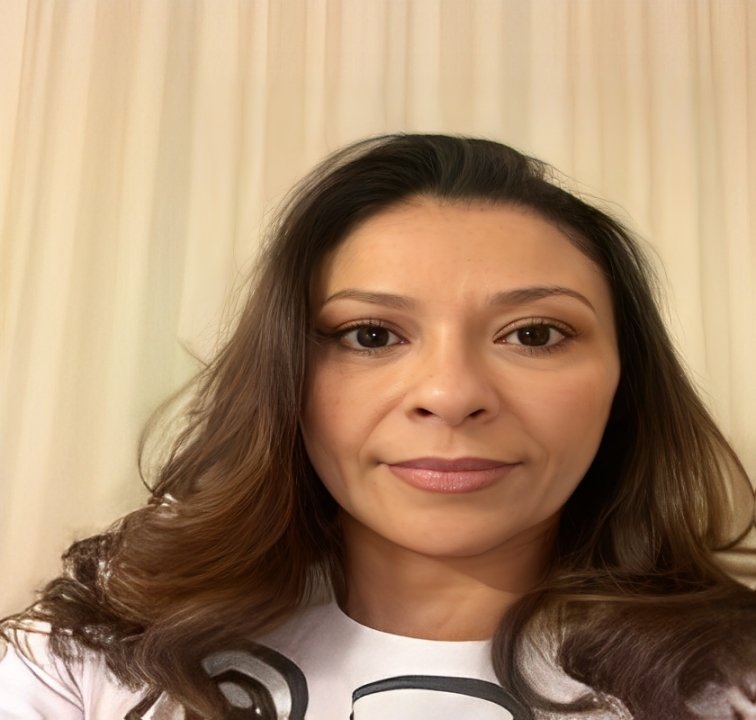
Title : Evaluation of the Topical Repellent Potential of Essential Oil from Croton sp (Euphorbiaceae) Leaves against Aedes Aegypti (Culicidae)
Name : Janaína Silva de Freitas
University : State University of Southwest Bahia-UESB
Country : Brazil
Download AbstractAbstract
Aedes aegypti (Linnaeus, 1762) is one of the most medically important mosquitoes because it is a vector of different arboviruses in urban areas, such as dengue, chikungunya and zika. The use of synthetic topical repellent based on N,N-diethyl-3-methylbenzamide (DEET) is one of the main methods of protection against the vector. However, studies show that mosquitoes have been showing resistance to the repellent action of DEET, which demonstrates the importance of alternative topical repellents, such as those based on essential oils (EOs). Among plant species that synthesize EOs is Croton sp. In this sense, the objective was to evaluate the in vitro topical repellent activity of the EO from Croton sp leaves against Ae. aegypti. For the test, mated female mosquitoes up to ten days old were used. Firstly, we sought to estimate two effective concentrations to repel 50 and 99% of mosquitoes from concentrations of 125; 100; 75; 50 and 25 mg/cm2 formulated in non-ionic emulsion. Each concentration was evaluated as follows: with 50 mosquitoes in the cage, five areas of 4.9 cm2 were marked on the upper part. A quantity of 0.1 g of the formulation initially containing the lowest concentration was applied to one of the markings. Subsequently, an artificial feeder containing 1 mL of blood from Capra aegagrus hircus (Linnaeus, 1758) preheated to 37 °C was placed over each concentration for three minutes (For the use of blood, the project was approved under registration 23076.058811/2020). The evaluation criterion was the number of landings. Next, the protection time of the 99% effective repellent concentration was evaluated. The same materials described above were used for the test. However, the evaluations were as follows: After 30 minutes of applying the 99% effective concentration, the artificial feeder was placed over the concentration for three minutes. Afterwards, the feeder was removed and placed in a water bath until the next evaluation, which occurred at 30-minute intervals, until 360 minutes were completed. The evaluation criteria were landings and blood feeding. The results showed that to repel 50 and 99% of mosquitoes, the estimated concentrations were 3 and 109 mg/cm2, respectively. The concentration of 109 mg/cm2 offered 64.8% protection against landings in 360 minutes and 100% against blood feeding for 150 minutes. The results indicate that Croton sp leaf EO is a promising alternative topical repellent in protection against the mosquito Ae. aegypti.
Biography
Prof. Janaina Freitas holds a degree in Biological Sciences (Licentiate and Bachelor’s) from the State University of Paraíba (UEPB, 2003) and a Ph.D. in Biochemistry from the Ribeirão Preto Medical School – University of São Paulo (FMRP-USP, 2008). Currently is a Full Professor at the State University of Southwest Bahia (UESB), teaching in the Chemistry, Environmental Engineering, Food Engineering, Animal Science, and Biological Sciences programs.
Currently is a permanent member of the Graduate Program in Environmental Sciences (PPGCA) and serves as the Local Coordinator of the Multicenter Program in Biochemistry and Molecular Biology (PMBqBM). Her research focuses on microbial metabolism and genetics, as well as biotechnology, particularly in fermentation processes for bioproduct production. She collaborates with the Innovation and Biotechnology Laboratory (InBiotec).
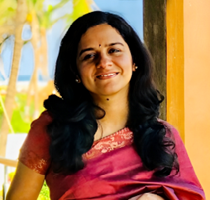
Title : Exploring Evidence on Path to Workplace Wellness by Harnessing role of Sudarshan Kriya Yoga(SKY)
Name : Dr. Monika Pathania
University : All India Institute of Medical Sciences
Country : India
Download AbstractAbstract
SKY is increasingly gaining recognition as a means to relieve occupational stress and burnout especially in high-stress environments. The controlled breathing patterns of SKY are meant to bring about the relaxing effect, emotional regulation, and general improvement in employees’ mental well-being.
Research has shown that SKY can significantly reduce the levels of stress and elevate psychological well-being among professionals. For example, a randomized control trial with medical doctors showed a significant decrease in psychological distress and burnout among participants participating in a SKY program against those who just received standard training on stress management (Korkmaz, 2024). This is specifically relevant because doctors and other professionals in the healthcare line experience high rates of stress and burnout and this can worsen their effectiveness and well-being (Korkmaz, 2024). The study demonstrates the viability of applying SKY as a non-pharmacological intervention in boosting resilience and coping in high-stress occupations.
Additionally, the physiological aspects of SKY contribute to its effectiveness in handling workplace stress. The exercise is known to enhance vagal tone, associated with improved emotional regulation and decreased reactivity to stress (Parimala & Kanchibhotla, 2020; Goldstein et al., 2016). This physiological response is essential for individuals working in stressful work environments, as it may result in effective stress management and reduced anxiety levels (Parimala & Kanchibhotla, 2020). SKY has also been associated with enhanced cognitive functioning and attention, which are necessary for keeping one’s productivity and concentration in the workplace (Chandra et al., 2016; Kopańska et al., 2022).
Besides these, the effectiveness of SKY in reducing burnout is complemented by the fact that it instills a feeling of community and social support in practitioners. Practice in group sessions of SKY can enhance the sense of social connection, a protective factor for burnout, as indicated by Vasudev et al. (2022). This sense of community provides both emotional support and stimulates the sharing of coping strategies at work, therefore creating a work environment that fosters support.
There is a potential positive effect of integrating SKY into workplace wellness programs. Organizations that adopt SKY as part of their employee wellness initiatives have reported improvement in employee satisfaction, reduced absenteeism, and overall workplace morale (Bhaskar et al., 2020). These outcomes suggest the potential for SKY as a holistic approach to managing workplace stress and preventing burnout.
In conclusion, Sudarshan Kriya Yoga offers a multifaceted approach to addressing workplace stress and burnout. Its effectiveness in reducing psychological distress, enhancing emotional regulation, and fostering social support makes it a valuable intervention for individuals in high-stress occupations. Continued research and implementation of SKY in workplace settings could provide significant benefits for employee well-being and organizational health.
Biography
Dr. Monika Pathania is an accomplished medical professional serving as an Additional Professor in the Department of Medicine at the All India Institute of Medical Sciences (AIIMS), Rishikesh, Uttarakhand. She has also held key administrative roles as Ex-Associate Dean (Research) and Ex-Assistant Dean (Student Welfare) at the institute. With a distinguished academic background, including an MD in Internal Medicine and certifications in Lifestyle Medicine (IBLM, ASLM, ISLM), Dr. Pathania has significantly contributed to healthcare innovation. She pioneered the institute’s first “Lifestyle Disease Clinic” and later expanded it into an Integrative Medicine Clinic and a Professional Burnout and Well-Being Clinic. Her research portfolio includes 112 publications and 18 projects. She is a DFID fellow in diabetes from CMC Vellore and a board-certified lifestyle medicine physician. Additionally, she is a certified yoga instructor under AYUSH (200 hours) and SSY. Dr. Pathania’s excellence has been recognized with several prestigious awards, including the Outstanding Woman Researcher in Internal Medicine Award (VIWA 2024), Excellence in Research of the Year Award (DISTF-2023), and Best Teacher Award (2018). She has also received accolades for her presentations at national conferences and achievements in yoga competitions.

Title : Mindfulness in Medicine: Promoting Health, Well-Being, and Resilience
Name : Dr. Anju Sawni
University : Michigan State University
Country : USA
Download AbstractAbstract
Background: Resident physician burnout is a long-standing issue in medical education with the COVID-19 pandemic causing significant additional burnout burden. Navines et. al. (2021) found current burnout rates of residents as high as 76% (vs 50% prior). Implementation of mindfulness programs has been shown to improve physician wellness, decrease burnout, & create environments of resilience (Romcevich et.al 2018, Ireland,et. al 2017). Epstein et. al. (2021) implemented a 4-day mindfulness workshop for physicians, improving emotional exhaustion, depersonalization, & patient-centered care. While mindfulness has recently come to the forefront of wellness, few studies describe feasible, longitudinal programs focused on resident wellness. Programs like Search Inside Yourself (SIY) teach mindfulness, emotional intelligence & leadership skills & may assist with mitigating burnout.
Objective: To assess a feasible, longitudinal mindfulness program (SIY) for resident physicians to combat burnout & stress; build resilience; & improve self-care.
Design/Methods: After completion of SIY training, Dr. Sawni (pediatrician) & Dr. Wolf (psychologist), taught a modified version to Pediatric & Medicine-Pediatric residents at Hurley Hospital, Flint MI. It consisted of 12 hours, split over 3 consecutive sessions. Pre & post-surveys were given,(n=25) assessing demographics, wellness, & program evaluation. Desired responses to 29 wellness questions (combining Strongly Agree/Agree, Very Often/Often, Strongly Disagree/Disagree, or Rarely/Never) were compared pre- to post-training. The study was approved by Hurley Hospital IRB.
Results: Of the 29 wellness questions,10 items had a positive change by at least 10 percentage points. There were 5 items, related to distractibility, that decreased by at least 10 points, indicating that mindfulness helps with being more present. After the program, 93% of attendees said they were Satisfied/Very Satisfied with the mindfulness program and 93% agreed that the material was relevant to current challenges. The majority (86%) reported feeling ready to apply what they learned.
Conclusions: Mindfulness as an approach to mitigate burnout & stress has been successful with resident physicians in limited previous studies. Teaching & incorporating mindfulness is feasible & can be introduced as part of the core residency curriculum. This pilot study presents a feasible way to incorporate mindfulness training within the educational context. Though the number of completed surveys was relatively low, the overall impact of the study was large. Limitations include a small sample size & a limited number of sessions. Future programs will include similar mindfulness interventions to support wellness longitudinally.
Biography
Dr. Anju Sawni M.D. FAAP, FSAHM is the Director of Adolescent Medicine at Hurley Children’s Hospital/Hurley Medical Center, Flint MI & Associate Professor of Pediatrics Department of Pediatrics & Human Development, Michigan State University/College of Human Medicine, Lansing, MI. Her interest not only includes Adolescent Health, but also Integrative Medicine. She is a member of the AAP section on integrative pediatrics. She has done research, published several papers & written chapters on Adolescent health & Integrative Medicine, and presented many lectures/workshops; nationally, statewide & locally. She integrates mind/body therapies such as relaxation techniques/self-hypnosis/mindfulness meditation, yoga, nutritional supplements, etc. in her adolescent practice. She has trained in mindfulness with Dr. Ronald Epstein, the University of Rochester, Mindfulness in Medicine Program, Search Inside Yourself Institute that promotes Mindfulness, Emotional Intelligence & Leadership & Awake Network; mindful health care summit as well as given several lectures on “Mindfulness in Medicine”. She incorporates/teaches mindfulness in medicine as part of the professionalism series to Hurley hospital & McLaren Health system residents. She serves on the board of directors of the Crim Foundation Mindfulness Initiative, Flint MI. She practices meditation/mindfulness/yoga in her personal and professional life.
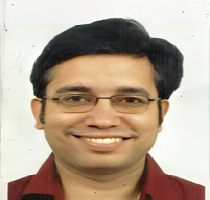
Title : Effect of Anuloma Viloma Pranayama (AVP) on Heart Rate Variability (HRV) and Brain Activity: A Cohort Study
Name : Dr. Varun Malhotra
University : All India Institute of Medical Sciences
Country : India
Download AbstractAbstract
Anuloma Viloma Pranayama (AVP), also known as Alternate Nostril Breathing (ANB), is a widely practiced pranayama technique known for its regulatory effects on cardiovascular and brain activity. This study aimed to explore the simultaneous effects of AVP on heart rate variability (HRV) and brain wave activity in a cohort of 30 healthy volunteers practicing kriya yoga for over 15 years. The study was conducted from October to December 2021. ECG for HRV analysis and EEG recordings for brain wave spectrum analysis were collected during three phases: pre-AVP, during AVP, and post-AVP, each lasting five minutes.
Statistical analysis using repeated measures of analysis of variance (ANOVA) with Bonferroni and Holm’s post-hoc comparisons showed significant increases in time-domain HRV parameters (SDNN and RMSSD) during AVP compared to pre- and post-AVP. In frequency-domain analysis, total power, LF power, HF power, and LF/HF ratio also showed significant increases during AVP, with the LF/HF ratio remaining elevated post-AVP. EEG recordings revealed a significant rise in Alpha, Beta, and Gamma wave power during AVP compared to baseline and post-AVP phases. These findings suggest that the lungs, heart, and brain act as coupled oscillators, and AVP induces an aroused, attentive state without significantly affecting heart rate, while enhancing overall HRV.
Biography
Dr. Varun, MD, DNB, MNAMS, holds a diploma in Naturopathy and Yoga and has been a regular faculty member at several institutions. He previously served as a Professor and Head of the Department at Santosh Medical College and is currently an Additional Professor in the Department of Physiology at AIIMS Bhopal. With 22 years of experience, his research interests include Medical Education and Mind-Body Medicine. Dr. Varun conducts yoga and meditation sessions for students and staff and enjoys sharing his passion for physiology. He has received multiple awards, including the prestigious Shri Ram Murthy, VIHA, and ISSN awards.

Title : Current Concepts in the Management of Neuropathic Pain
Name : May L. Chin
University : George Washington University
Country : USA
Download AbstractAbstract
Unrelenting neuropathic pain presents challenges in diagnoses and treatment. The International Association for the Study of Pain (IASP) defines neuropathic pain as “pain caused by a lesion or disease of the somatosensory nervous system.” The injury or disease may occur in the peripheral or central nervous system giving rise to painful conditions such as post herpetic neuralgia, painful diabetic neuropathy, post amputation pain, complex regional pain syndrome, trigeminal neuralgia, post stroke pain, and pain after spinal cord injury, to name a few. These patients are frequently disabled from severe pain, have poor quality of life, and suffer from anxiety, depression and sleep problems. They often strain the healthcare system with frequent visits. Treatment of neuropathic pain can be challenging, often exhausting conventional approaches. A multimodal approach integrating pharmacological, interventional and integrative modalities may be helpful. This talk will cover a brief review on the pathophysiology of pain and focus on interventions that specifically target neuropathic pain, such as neuromodulation, including peripheral nerve stimulation and infusions using ketamine.
Biography
Dr. Chin is Professor Emeritus of Anesthesiology and Critical Care Medicine at the George Washington (GW) University, Washington DC. She served as Director of the GW Pain Medicine Fellowship Program and Co Director of the GW Spine and Pain Center. Dr. Chin earned her medical degree at the University of Melbourne, Australia. Her interests include innovative pharmacological, interventional and neuromodulatory techniques for management of chronic neuropathic pain. She has published on topics in pain medicine including pain in women, written numerous articles and authored book chapters on both acute and chronic pain. She served on the American Society of Anesthesiologists (ASA) Pain Medicine Committee, the American Medical Association (AMA) advisory board for pain, the Anesthesia and Analgesia (A&A) Editorial board as a reviewer, and the American Board of Anesthesiologists (ABA) as an associate board examiner. She has presented and lectured on acute and chronic pain at national meetings including the ASA, the American Society of Regional Anesthesia and Pain Medicine and the American Academy of Pain Medicine. For the past twenty years she was consistently listed in Washington Top Docs for Pain Medicine and was recently awarded the Trailblazer Award from ASRA.
